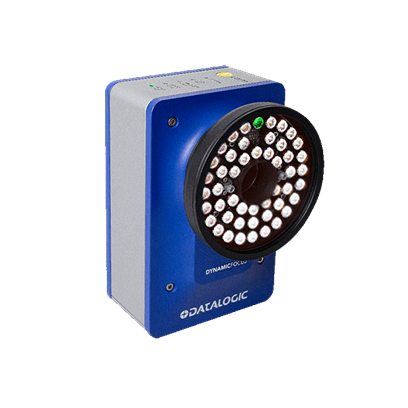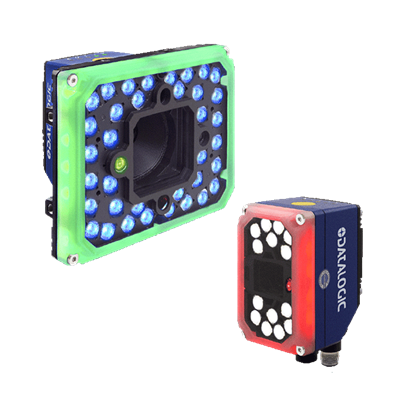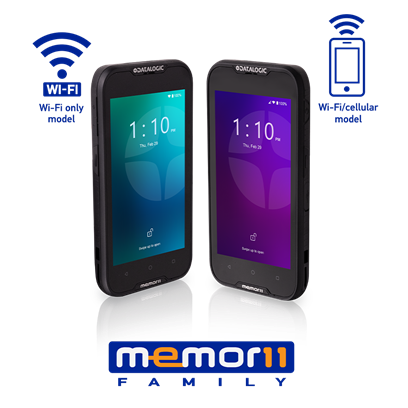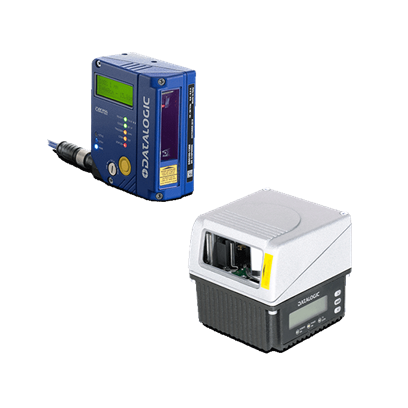Palletizing
Palletizing
Intralogistics is the complete process of managing and optimizing the flow of material goods within the walls of a manufacturing plant warehouse. When we picture such operations, we imagine material handling systems, robotic operations, and palletizing systems. The palette contents can undergo many changes throughout their lifecycle, and traceability is essential in ensuring we keep track of where everything is.
In simple terms, palletizing is the automatic process of stacking cases of goods or products onto a pallet in a specific way. Pallets are usually shrink-wrapped using plastic film or tape. It is important to be able to identify the pallet and contents by reading the barcode labels applied on it.
To ensure traceability goals are met, a barcode reading solution requires a large Field of View (FoV). Pallet labels can be applied automatically or by hand, printed in real-time or be pre-printed, and located in any position and on any side of the pallet. The pallet outer wrapping can be highly reflective under certain lighting conditions making the barcode readability even more challenging.
Large FoV solutions are useful in palletizing and intralogistics as a single reader can be used to cover two sides of the pallet, even at high skew angles. Full pallet coverage can be achieved using as little as two readers.
DATALOGIC SOLUTIONS FOR PALLETIZING AND INTRALOGISTICS
Datalogic provides a range of effective pallet scanning solutions, depending on the coverage required.
- Matrix 120 for single carton identification at palletizer inlet. It provides high 1D and 2D code reading performance, thanks to its small size, robustness, ease of integration and configuration, and onboard connectivity.
- Matrix 320 for larger FoV coverage on completed pallets. It includes reading large labels with multiple barcodes, manually applied labels with non-repetitive positioning, effective reading of poorly printed low-contrast codes, and reading at high skew angles. In most applications, a single reader can cover two adjacent sides of the pallet.
- AV500 imager for palletizing applications requiring an even larger FoV coverage.
All the above Datalogic readers use imaging technology developed for palletizing applications. They can be integrated by the OEM as part of the original packaging machine design or retrofitted afterwards.
PACKED FULL OF BENEFITS
Each of the solutions above from Datalogic’s intralogistics solutions for palletizing offers multiple options and benefits to meet and exceed the needs of our customers. Key benefits of these reads include:
- Ruggedness
To help protect your investment and provide a strong ROI we supply enclosures with robust designs. Our readers have IP ratings up to IP67, and an operating temperature range up to 50°C. - Communications
Choose the communication features to suit every setup: TCP/IP, UDP, FTP, FTPS, Fieldbus PROFINET IO, Ethernet IP, and Modbus TCP. - Decoding
You will get exceptional decoding performance with our multicore image processing platform that is ideal for high-speed applications. For maximum throughput, our hardware acceleration allows fast algorithm processing and improved decoding capabilities. - Illumination
Lighting color and intensity are easily selected for maximum read rate based on the code type, material that the code is on, and material color. - Ease of use
With the advanced setup and configuration tools such as E-genius and DL Code users are guaranteed optimal performance and maximized throughput. - Multi-focus capabilities
Dynamic, Sequential, and SW adjustable focus allow for excellent performance over the widest range of application requirements. - Interoperability
All of the image-based ID scanners can function in a system together, allowing the system to be optimized for performance at the lowest overall system cost. - Image saving
Multi-standard image saving options using optimized image compression algorithms, parallel image transfer, and multiple channels at different image compressions extend the functionality of the devices to such applications as OCR and video coding.
Products and Solutions
Success Stories
Video Gallery
Datalogic Complete Intralogistics Solution | Smart Automation for...
Datalogic Blade Series - Revolutionary imaging for cutting edge...
Datalogic Matrix Family | Speed meets flexibility
Datalogic Matrix 320™ X and Premium models | A complete solution with...






